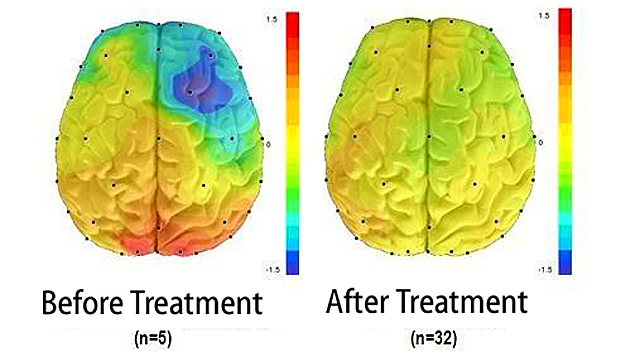Revealing the Link Among qEEG and Slumber Apnea Patterns for Improved Diagnosis and Therapy
Revealing the Link Among qEEG and Slumber Apnea Patterns for Improved Diagnosis and Therapy
Blog Article
Slumber hypopnea is a common sleep condition that impacts many individuals around the globe. It occurs when a person's breathing is disrupted during slumber, leading to subpar slumber standards and multiple health concerns. One of the methods researchers and physicians are working to improve comprehend and identify sleep apnea is through a technique called quantified EEG, or qEEG. This approach measures the electronic function of the brain and can offer important understandings into how sleep apnea impacts cerebral activity and overall well-being.
qEEG entails positioning small sensors on the scalp to capture cerebral oscillations. These cerebral waves are then analyzed to identify trends that may suggest sleep conditions, including sleep apnea. By examining these patterns, healthcare professionals can obtain a clearer understanding of how sleep apnea interrupts normal brain activity during slumber. This data can be essential for developing effective treatment strategies customized to specific patients. Understanding the connection between qEEG and sleep apnea can result to enhanced identification methods and better outcomes for those affected by this condition.
Studies has demonstrated that people with sleep apnea often display distinct changes in their cerebral oscillation trends. For example, during episodes of apnea, the brain may exhibit heightened function in specific regions while other areas become less active. These changes can affect how well a person sleeps and how rested they perceive upon awakening. By employing qEEG to track these cerebral oscillation patterns, doctors can identify you could try here specific traits of sleep apnea in clients, which can assist in formulating a more precise identification. This is especially crucial because sleep apnea can occasionally be confused for alternative sleep conditions, leading to inappropriate treatments.
In addition to improving diagnosis, qEEG can also play a role in evaluating the effectiveness of treatments for sleep apnea. For example, after a patient begins using a continuous beneficial airway force (CPAP) device, which assists maintain the passage clear during slumber, qEEG can be utilized to evaluate alterations in brain activity. If the brain exhibits enhanced trends of slumber after initiating treatment, it may suggest that the treatment is functioning well. This response can assist doctors make required modifications to therapeutic strategies, ensuring that patients receive the best care possible.
Overall, the connection between qEEG and sleep apnea patterns is an exciting area of research that holds potential for improving diagnosis and therapy. By comprehending how sleep apnea impacts cerebral activity, medical professionals can develop more effective strategies to help patients attain improved sleep and enhance their general well-being. As research progresses to advance, it is probable that qEEG will turn into an integral tool in the fight against sleep apnea, leading to better outcomes for those who experience from this challenging condition.